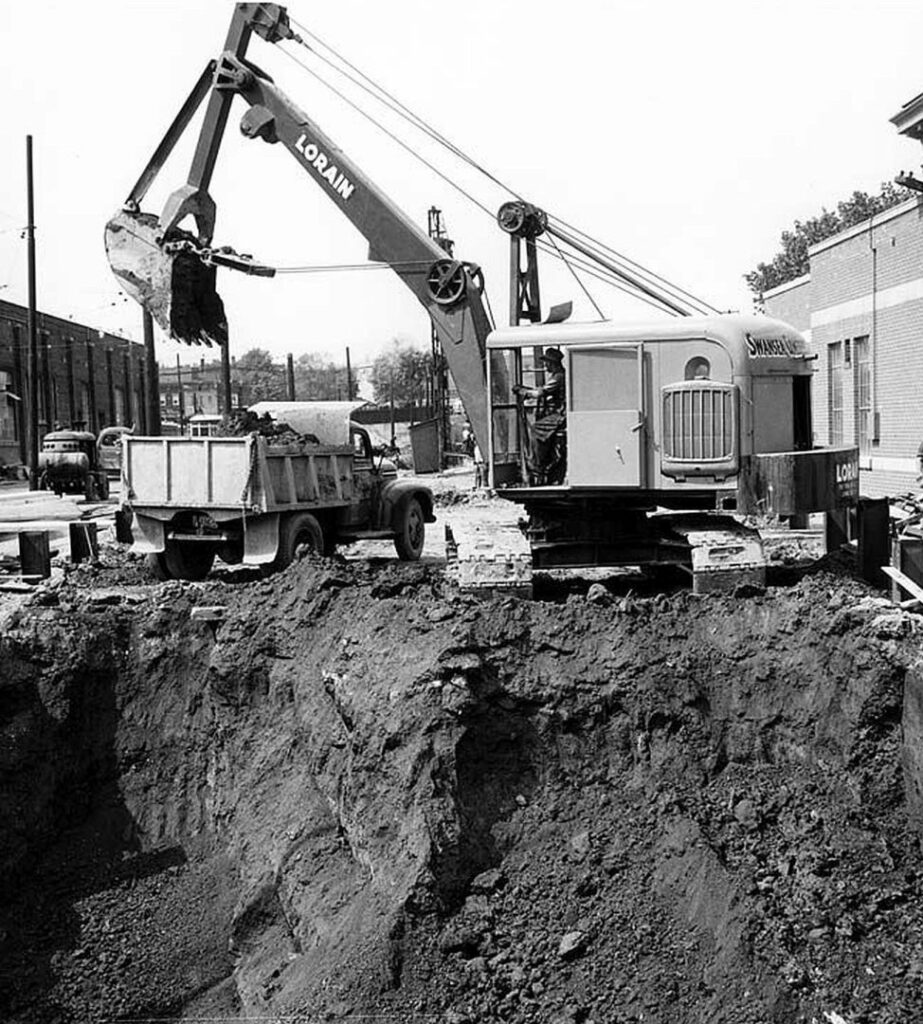Pictured here in the spring of 1952, is a Lorain Model 50 cable shovel owned by Swansea Construction Co. in Toronto, Ontario.
Construction of the Toronto subway system had started a few years earlier and continued using the open cut method where feasible. Swansea, along with several area contractors supplied equipment on rent to the main construction consortium of Pitts, Johnson, Drake and Perini, due to the size and scope of the project.
As with many cable shovels in the era, the Lorain Model 50 could be configured as a crane, shovel front, dragline, clam or, as it appears, with a hoe front. This 1.15 metre-cubic capacity unit was powered by a Caterpillar D318 4-cylinder engine. Air-controls for the operator were scarce and the clutch and brake used mechanical levers — no joy levers here!
The Thew Shovel Company began manufacturing rail and steel wheel mounted steam shovels in the early 1900s in Lorain, Ohio. By the 1930s, the shovel’s brand name had evolved to the easily named ‘Lorain.’ In the succeeding decades, Lorain produced truck and crawler mounted cranes with a brief foray into hydraulic excavators and wheel loaders.
The Lorain Shovel Company became part of the rival Koehring Company in the late 1960s.
RELATED: 1940s Northwest Model 80D crane working on Toronto’s subway system
The Historical Construction Equipment Association’s (HCEA Canada) 2024 events include Wheels & Tracks in June and the Last Blast on October 19. Both events are held at the Simcoe County Museum, near Barrie. To see more than 60 pieces of vintage construction equipment in action be sure to attend. HCEA Canada is a proud Heritage Partner of the Simcoe County Museum. Visit hceacanda.org for updates
Read the full article here

